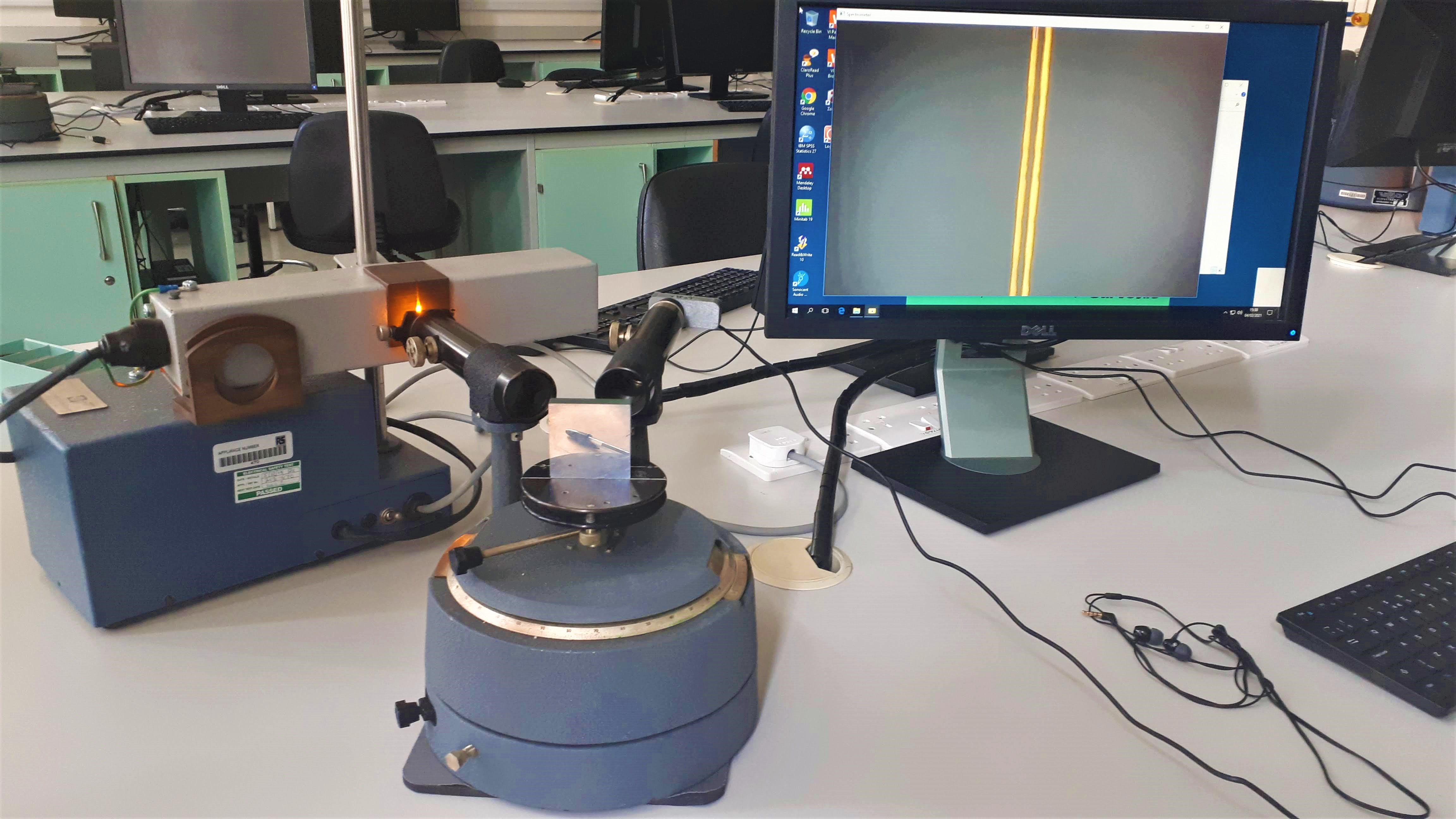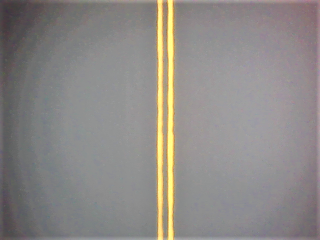- Home
- Semester and Timetable Information
- Study Physics
- Our Research
- Our People
- Careers and Alumni
- Seminars, News and Events
- Outreach and School Resources
- About the School
- What is Physics
- The Crawford Observatory
- Frequently Asked Questions
- UCC Futures Quantum & Photonics
- Supports
Determination of the Separation Between the Yellow Doublet of the Sodium Spectrum
In this experiment students become re-familiarised with the detailed workings of an optical spectrometer and determine how accurately they can measure wavelengths and differences in wavelength using this device. In previous experiments students have used diffraction gratings where the light is shine through the grating to seperate the light into seperate wavelengths. This is a transmission grating. However the main concept described in the paper "The plane reflection grating revisited” by U. Buckley and F. Deeney is that reflection gratings give brighter fringes and better resolution compared to a transmission grating. Reflection gratings use reflective grooves, so that light shone on it reflect off at different angles, depending on the wavelength, seperating out the different wavelengths of the light. The finer detail allowed by the reflection grating allows the sodium yellow doublet at 589.0 nm and 589.6 nm to be observed and measured.

A camera is used on the spectrometer to allow images of the spectra to be captured and anaylsed. Students rotate the grating so multiple orders of the yellow doublet can be imaged. The light intensity of a line segment of the image is also recorded and plotted in Excel to allow students to measure the seperation between the doublet. The resolving power of the grating can then be calculated.
The resolving power (RP) of a grating is a measure of the grating capability to distinguish between two wavelengths very close in value. Practically it is the smallest separation ∆λ that is observable using a particular diffraction grating. It is defined as the ratio between the average measured wavelength and the separation ∆λ between them, which can be written as:
RP = λ / ∆λ
where λ is the mean wavelength of two spectral lines.

You can explore other atmoic spectra using these simulations:
